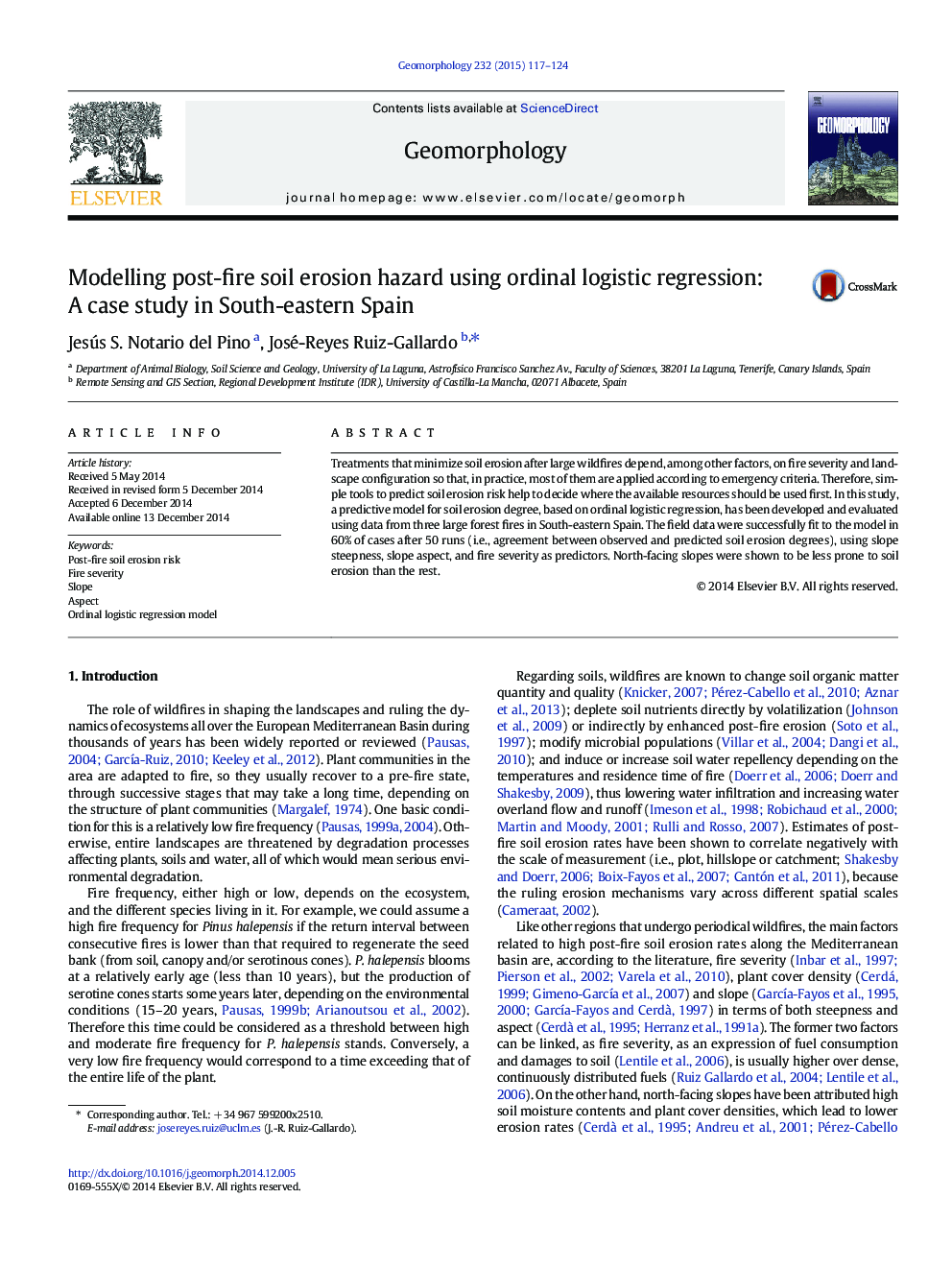| Article ID | Journal | Published Year | Pages | File Type |
|---|---|---|---|---|
| 4684361 | Geomorphology | 2015 | 8 Pages |
•A method to identify most vulnerable areas towards soil erosion has been proposed.•Slope steepness, aspect and fire severity were the inputs.•The field data were successfully fit to the model in 60% of cases after 50 runs.•North-facing slopes were shown to be less prone to soil erosion than the rest.
Treatments that minimize soil erosion after large wildfires depend, among other factors, on fire severity and landscape configuration so that, in practice, most of them are applied according to emergency criteria. Therefore, simple tools to predict soil erosion risk help to decide where the available resources should be used first. In this study, a predictive model for soil erosion degree, based on ordinal logistic regression, has been developed and evaluated using data from three large forest fires in South-eastern Spain. The field data were successfully fit to the model in 60% of cases after 50 runs (i.e., agreement between observed and predicted soil erosion degrees), using slope steepness, slope aspect, and fire severity as predictors. North-facing slopes were shown to be less prone to soil erosion than the rest.
